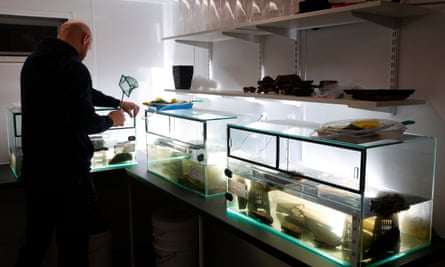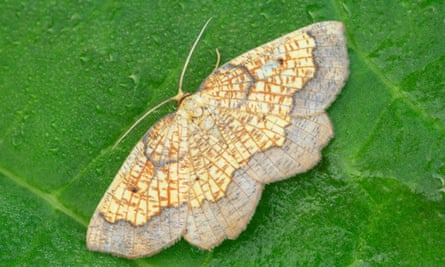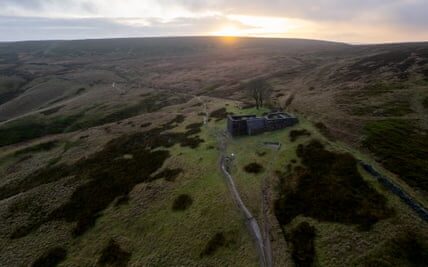The medicinal leech is a creature that is often unappreciated in the wild. It has three powerful jaws that can latch onto its prey and is drawn to the scent of blood. These leeches will eagerly approach humans, deer, or cattle that enter their watery habitats for activities such as bathing, fishing, or drinking.
However, despite its size, this predator has become the subject of an unexpected reintroduction effort led by conservationists at a laboratory located in the remote Scottish Highlands. The wildlife park, which is renowned for its polar bears, wildcats, and wolves, is where the project is taking place.
Hundreds of leeches are being considered for release into Scottish lochs and streams in an effort to repopulate the countryside after years of habitat loss and exploitation.
Buglife and the Royal Zoological Society of Scotland have successfully obtained 14 leech specimens from a loch in Oban on the western coast. This area is one of the few locations in Scotland where these leeches are still found. The scientists are optimistic that these specimens will reproduce next year.
The NatureScot conservation program, along with seven environment groups, is working to protect the medicinal leech, Hirudo medicinalis, which is one of 37 priority species. This program focuses on preserving a variety of plants, butterflies, birds, bats, and bugs.
In the UK, there are 17 different types of leeches and the largest among them are medicinal leeches. These leeches used to be plentiful, but in the late 1700s, doctors discovered their usefulness for medical purposes.
In the past, doctors thought that using leeches to withdraw blood could restore balance to the body’s “humours” and heal illnesses. Leeches were collected in large numbers and shipped overseas. Women were used as bait, wading into water without covering their legs, and some reportedly became anemic. Pottery companies created special jars with tight lids to store leeches for use in medical facilities.
As humans used them less in the early 1900s, their numbers declined due to loss of habitat in many parts of the UK. These creatures require shallow and warm bodies of water, with abundant plant life, a thriving population of amphibians for food, and rocky banks for laying their eggs.
Healthcare specialists in the United Kingdom, including medical centers in the central and southern regions of England, have brought back the use of leeches in surgeries. This is due to the natural anticoagulants found in leeches which aid in maintaining blood flow during operations. The specific type being utilized is the Mediterranean species, Hirudo verbana, which is sourced from a leech supplier located near Swansea.
The medicinal leech, Hirudo medicinalis, is safeguarded by the Wildlife and Countryside Act because they are rare. This means that it is illegal to collect them without special authorization, preventing their use in medicine.
Craig Macadam, the conservation director of the invertebrates charity Buglife, recently discovered a third location near the Solway Firth in Dumfries and Galloway, which he had previously feared was limited to only two remaining sites in Scotland.

I observed two locations in Scotland, one being the Hebridean island of Islay, where a small loch is undergoing restoration to aid in their conservation efforts. The other location was near Oban, where their breeding population was harvested. In England and Wales, there are approximately 18 isolated populations, which are also the target of conservation programs.
Macadam waded into the water to catch them, wearing anglers’ waders rather than leaving his legs bare. “You splash about and they come to you,” he said.
Medicinal leeches respond to their prey, including frogs, newts, waterbirds like coots and moorhens, and larger animals such as deer and cows, when they come to the water. Their interest is piqued by vibrations in the water.
Macadam has been studying the type of organism for a duration of five years. On an impulsive decision, he attempted to locate locations named after leeches by using the initial map of Scotland from the Ordnance Survey. He discovered a total of 28 locations that utilized the Gaelic term for “lake of the leech,” which is Lochan nan Deala.
“He suggested that as we reintroduce megafauna such as wolves and lynx, we should also introduce their parasites. This is an integral part of restoring and maintaining a healthy ecosystem. It is similar to conservation efforts for larger, more popular animals.”
Helen Taylor, the manager of the RZSS breeding project at the Highland Wildlife Park in Kingussie, recognizes that leeches are not as popular as the iconic symbols of Scottish rewilding such as golden eagles and beavers, or the wildcats that are also being bred for reintroduction at the park.
The RZSS is currently breeding four invertebrate species in a clean laboratory at the park, which includes the leech, pine hoverfly, dark-bordered beauty moth, and pond mud snail. These creatures now reside in fish tanks.
She compares the duty of protecting invertebrates to maintaining a plane’s safe flight. While their specific importance in a specific ecosystem may not be known, they serve as crucial components like rivets in the wing of an aircraft. Losing too many or the wrong rivet can result in the plane crashing, according to her.
“We are addressing both ends of the spectrum simultaneously: one cannot be done without the other. A comprehensive approach to the ecosystem is necessary,” stated Taylor. “I envision a future where medicinal leeches are a common sight in our lakes.”
Small gains

In addition to its more famous efforts to breed wildcats and polar bears, the Royal Zoological Society of Scotland is also focused on reintroducing less attractive invertebrates. These efforts include:
Pine hoverfly
A minuscule, yet highly endangered bug that can only be found in the Cairngorms serves as both a pollinator and waste manager. Its young consume decaying wood and are capable of surviving freezing temperatures. Experts at RZSS have successfully bred thousands of larvae and reintroduced them to specific tree stumps in the forest.
Dark-bordered beauty moths
This rare moth species, classified as critically endangered, can only be found in two locations in Scotland and one in England. In July, caterpillars of this species were released for the first time after being raised in a specialized RZSS facility. The moth’s diet consists of aspen suckers, which are a rare type of tree that is often consumed by deer and livestock.
Pond mud snails
Listed as vulnerable, these aquatic snails were once found across Britain, living in ponds, ditches and marshland, hibernating in the mud when the water dries out. They help recycle organic waste and are indicators of the health and cleanliness of freshwater ecosystems.
Source: theguardian.com


